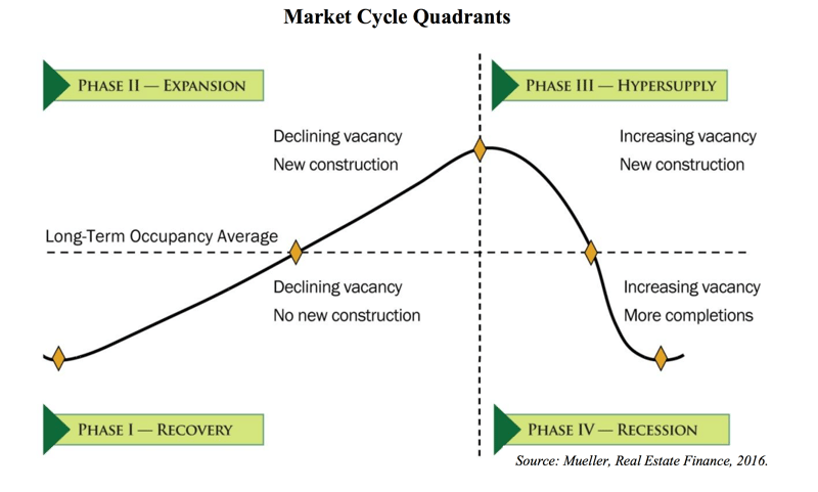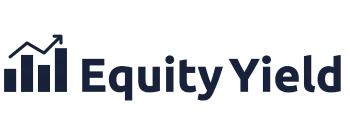Investing in real estate requires a keen understanding of local supply trends, which play a pivotal role in determining the potential success of an investment. High interest rates and economic uncertainties are currently shaping the market landscape, making it crucial to assess the timeline for absorbing new deliveries and predict their impacts on rents, concessions, and vacancies.
Many properties today face higher vacancies due to increased supply and competition. While this scenario may seem daunting, it also presents opportunities for investors to purchase properties at a discount relative to their values two years ago. However, these discounts are only meaningful if vacancies start to decrease in the future.
Understanding the Market Cycle
Where are we in the market cycle? The fundamentals of the market cycle are driven by new supply, with the impact measured in terms of occupancy. The phase of the cycle is determined by the direction of the occupancy trend, whether it is above or below the long-term average occupancy, and if there is new construction in progress or being delivered.
Currently, for most major markets, new deliveries are being brought to market with a few more projects in the pipeline. However, very few markets have a robust pipeline of future deliveries.
Given the high cost of capital and the long timeline needed to get a development project from business plan to lease-up, we expect that the next 24-36 months will see very little new supply in most markets. This supply profile puts us in either Phase 3 or Phase 4 for most markets.

Looking at occupancy and rents, most major markets are experiencing declining occupancy and rents. If you are in a market where occupancy is below the long-term average, you may already be in Phase 4.
This phase represents the theoretical bottom, the lowest pricing point that we are likely to see. This is where the best deals are found for those brave enough to invest when everyone else is paralyzed by uncertainty.
While it’s not advisable to try to time the exact bottom, it’s beneficial to understand the market cycle’s direction and speed. Buying the dip is advantageous, but one should not be waiting for recovery for an extended period.
The Importance of Local Supply Trends
Understanding local supply trends is not just about knowing the overall supply and demand dynamics. It’s crucial to drill down into specifics, such as identifying where new supply is coming from and targeting areas with high demand but less new supply. This granular analysis helps investors pinpoint opportunities that may not be apparent at first glance.
Putting this into practice on our new acquisition – Portofino Club
For example, on our latest acquisition, Portofino Club, we know that demand for housing is incredibly strong due to historic growth population and job growth trends. We also know that supply in the Jacksonville MSA has outweighed demand in the past 18 months. So at first glance, this may create a headwind for the investment.
However, upon closer inspection it is clear that supply in the immediate vicinity of the property has been very limited over the past 3 years. Only 300 apartment units were delivered in 2022, only 300 were delivered in 2023 an only 265 are being delivered in 2024. In each year, only 2% of inventory is being added, and given demand for housing in the area, this additional inventory is being comfortably absorbed.
To top this off, there are no new deliveries planned within a 5-mile radius of the property over the next 8 quarters! This gives us a lot of confidence that we can grow rents over the medium term.

Analyzing New Supply Sources
To effectively target areas with high demand and less new supply, investors need to:
- Monitor New Developments: Keep track of new projects, their expected completion dates, and the rate at which they are being absorbed. This data helps gauge whether the market is likely to be oversupplied or balanced.
- Understand Local Economic Drivers: Economic factors such as job growth, population trends, and major infrastructure projects can significantly impact demand. Areas with strong economic drivers but limited new housing supply can offer lucrative opportunities.
- Evaluate Market Sentiment: Market sentiment can often lag behind reality. While headlines may suggest an overall market trend, local nuances can present different opportunities. Understanding the local sentiment and how it aligns or diverges from the broader market is critical.
Conclusion
The next period could potentially present some of the best buying opportunities seen in a long time. As most markets push into the recession phase of the cycle, prices are likely to be at their lowest points. However, the uncertainty associated with higher vacancies, lower rents, and high financing costs may cause many of these opportunities to be overlooked.
The investors who can accurately assess where the weaker market forces are temporary will be the ones to make outsized returns as we navigate through yet another cycle. By understanding local supply trends and targeting areas with high demand and less new supply, savvy investors can position themselves to capitalize on the upcoming opportunities.
To learn more about how we can help you to generate superior investment results through professionally managed Real Estate investments, click here to register for our investor club.
